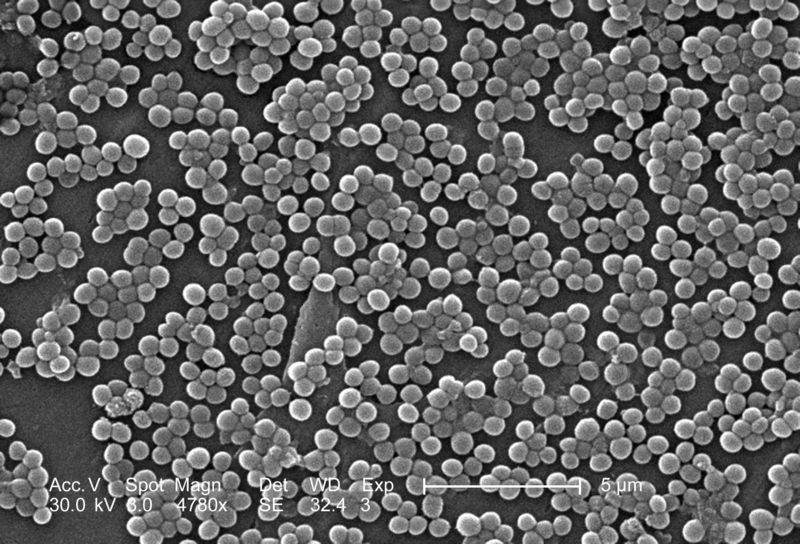Classification
MRSA is short for Methicillin-resistant Staphylococcus aureus. When you translate it literally from Latin, it means golden cluster seed because of its yellow color and the fact that it clusters together. Methicillin is a type of antibiotic that the Staphylococcus aureus has become resistant to. Staphylococcus aureus is a common bacteria found everywhere, including in many places on your body.
Its taxonomic classification (http://www.ncbi.nlm.nih.gov)
Taxonomy Name Reason placed in specific taxonomy
Domain: Bacteria Bacteria are very small, single-celled organisms that can reproduce quickly
Kingdom: Eubacteria Eubacteria are commonly occurring prokaryotes that live in a variety of places
Phylum: Firmicutes Firmicutes are gram-positive (www.earthlife.net)
Class: Baccilli Bacilli are rod-shaped (www.thefreedictionary.com)
Order: Bacillales
Family: Staphylococcaceae A lot of medically significant pathogens are in this family
Genus: Staphylococcus Divide into two planes
Species: Staphylococcus aureus Yellow coloring
Subspecies: Methicillin-resistant Staphylococcus aureus Resistant to methicillin an antibiotic (www.textbookofbacteriology.net/staph.html)
If you want to learn about other types of bacteria, you can go to either flesh eating bacteria or tooth decaying bacteria.
Organisms can also be placed in a phylogenetic tree. Here is one example of a phylogenetic tree for MRSA.

This tree shows that MRSA is most closely related to VISA which is another form of resistant Staphylococcus aureus. Also, there are many different types of Staphylococcus, which can cause other infections in humans and animals. This tree is based on morphological data and shows many other families and genus's that are closely related to MRSA.
seubert.heid@students.uwlax.edu
